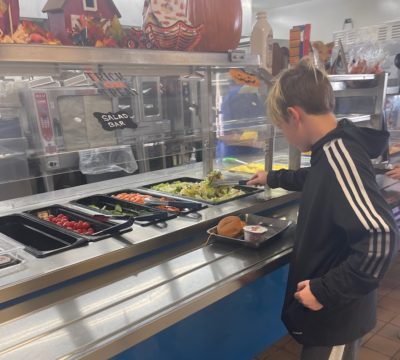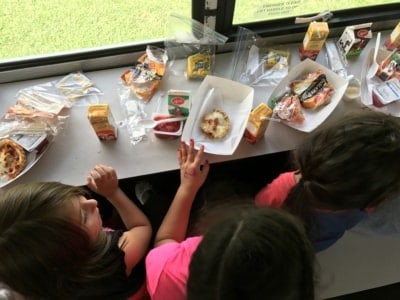
|
|
The U.S. Department of Agriculture (USDA) announced a new plan to expand access to school meal programs for students across the country last week.
The plan proposes a change that would allow more schools the option to provide school meals to students at no cost by expanding the number of schools that are eligible for the Community Eligibility Provision (CEP).
While the proposed rule does not increase federal funds for school meals, it aligns with President Joe Biden’s 2024 budget, which requests an additional $15 billion over 10 years to support schools participating in CEP. According to a press release from the USDA, expanding this program would help reach 9 million more children.
A pandemic-era federal program provided free school meals to all public school students for about two years. That program ended in September, just after the start of the 2022-23 school year. However, the N.C. General Assembly passed legislation last summer that extended free lunch for the 2022-23 school year to students who qualified for reduced-lunch.
In North Carolina alone, school meal debt has climbed since this program ended. As of December 2022, school meal debt in North Carolina’s public schools reached more than $3.1 million.
This proposed change to CEP could help some districts fill the hole left after this program ended.
What is CEP?
According to No Kid Hungry, CEP is a school meal funding option of the National School Lunch Act that enables schools to provide free meals to all students.
This new plan would expand access to CEP by lowering the minimum identified student participation percentage threshold, which is currently at 40 percent, to 25 percent.
But Andrew Harrell, the program and communication manager for Carolina Hunger Initiative and No Kid Hungry NC, said this change may not do enough to alleviate financial pressure on school nutrition programs on its own.
“The CEP program in general is an excellent one that has made a big impact on our state,” Harrell said. “The lower the threshold number you’re dealing with the more difficult it is to make it financially viable to use the CEP program.”
Right now, Harrell said about 1,000 schools in North Carolina participate in CEP. He said that lowering the threshold to 25 percent isn’t as easy to implement as it sounds.
CEP is a bit of a complicated program. Here’s how it works.
Right now, to be eligible to utilize CEP, schools must have an “identified student percentage” (ISP) of at least 40%. The ISP is the percentage of the student body automatically certified for free school meals due to their participation in certain federal benefits programs, like the Supplemental Nutrition Assistance Program (SNAP), Temporary Assistance for Needy Families (TANF), or Medicaid. Other eligible students include migrants, runaways, students experiencing homelessness, and students in foster care. Students enrolled in Head Start or Early Head Start are also eligible.
This number doesn’t consider low-income students who are not “categorically eligible” based on the description above. To balance this, a 1.6 multiplier is applied to the ISP to determine the reimbursement rate for meals served.
No Kid Hungry explains that schools are reimbursed at the highest level, the “free” rate, for that percentage of meals served and receive the lower “paid” rate for the remaining meals.
For the 2019-20 school year, the free rate for a lunch was about $3.50 and the paid rate was about $0.41, Harrell said.
This is what makes the proposed threshold adjustment complicated for schools in North Carolina.
The higher a school’s ISP percentages, the more reimbursement from the federal government they’ll receive. Schools with lower ISP percentages often aren’t getting reimbursed enough by the federal government to cover the remaining meals, so they have to find that money elsewhere.
Check here for a full breakdown of how CEP reimbursement works.
Grant opportunities for schools
In its press release, the USDA also announced $60 million in grants to improve school nutrition by increasing nutrition education and increasing collaboration between schools and local growers.
The USDA opened applications for up to $10 million in Fiscal Year 2023 Team Nutrition Grants, which are intended to support nutrition education for school-aged children.
In addition to expanding CEP, nutrition advocates have been calling for increased reimbursement rates and expanding free school meals to all students regardless of income.
“We know that the benefits of good nutrition lead to better mental health, better physical health, better performance academically,” Harrel said. “A big part of that is teaching kids and their families how to eat in a healthy way, and how to make meals on their own in a healthy way.”
Harrell called school cafeterias the “largest restaurants in the state,” being that they serve hundreds of school children each day. And according to a study from Tufts University, the most high-quality meals are coming from schools.
“I don’t think a lot of people appreciate how healthy these meals are,” Harrell said.




